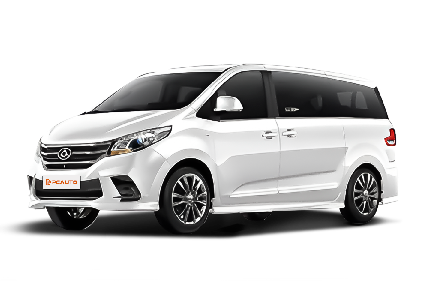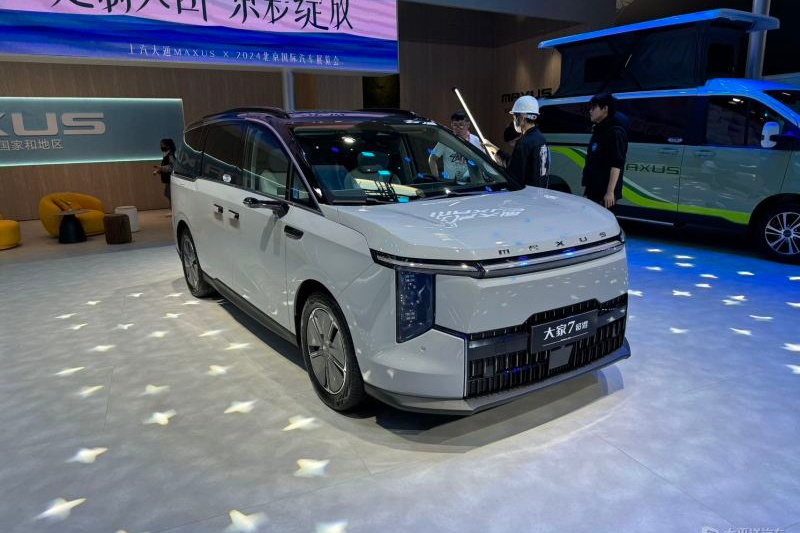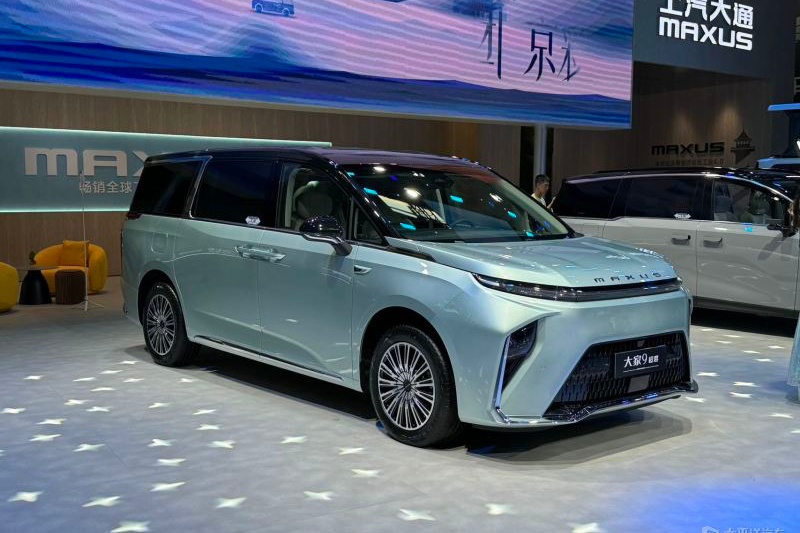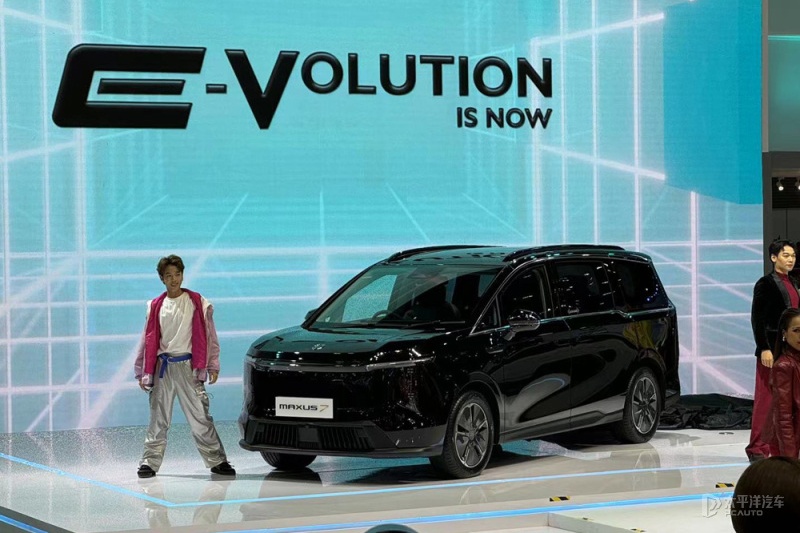Q
What is the difference between G5 and G10?
G5 and G10 usually refer to the codes of different automobile brands or models. The specific differences need to be interpreted in combination with the brand and model. For example, in common Malaysian brands such as Proton or Perodua, such codes may represent models of different generations or configurations. Taking Proton as an example, G5 may refer to the fifth - generation version of a certain model, while G10 may be the tenth-generation or an upgraded version with higher configuration. Usually, G10 will have improvements in the power system, technological configuration, or body design. For instance, it may be equipped with a more efficient engine, a more advanced safety system (such as ASA advanced driving assistance), or an updated infotainment system.
For Malaysian consumers, when making a choice, they can consider according to their budget and needs. If they focus on cost-effectiveness, G5 may be more affordable, while those who pursue the latest technology can choose G10. In addition, the Malaysian market offers tax incentives for locally assembled (CKD) models. Therefore, it is recommended to check the localization level and after-sales support of the model before purchasing a car, as these factors will also affect the long-term usage cost.
Special Disclaimer: This content is published by users and does not represent the views or position of PCauto.
Related Q&A
Q
Is Maxus G10 durable?
As a multi-functional commercial MPV, the Maxus G10 shows average performance in terms of durability. Its body structure is made of high-strength steel, and the chassis is tuned for comfort, which meets the needs of driving on Malaysian city roads and for long-distance trips. The 2.0T turbocharged engine installed in this vehicle has mature technology and is paired with a 6-speed automatic transmission. It provides a smooth power output and has relatively reasonable maintenance costs, which suits the local consumers' requirements for practicality and economy.
In Malaysia's hot and rainy climate, it is recommended to regularly check the cooling system and air - conditioning components, and replace the lubricating oil recommended by the original factory on time to extend the engine's service life. The after - sales service network of the Maxus brand in Malaysia is gradually being improved, and car owners can get regular maintenance support through official channels.
For MPV models, durability not only depends on the mechanical quality but also has a close relationship with daily maintenance habits. It is recommended that car owners strictly follow the maintenance manual cycle and pay special attention to the anti - rust treatment of the chassis after the rainy season. Among models in the same class, the G10 has certain advantages in terms of space flexibility and cargo - carrying capacity, making it suitable for family or business use. If you focus on long - term usage costs, you can choose the configuration version with a high local market share to ensure the supply of subsequent repair parts.
Q
Is the Maxus G10 petrol or diesel?
The Maxus G10 offers both gasoline and diesel engine options in the Malaysian market, depending on the model configuration and year version. The gasoline version is typically equipped with a 2.0-liter turbocharged engine, while the diesel version uses a 1.9-liter turbocharged diesel engine. Both engines focus on balancing fuel economy and power output, making them suitable for family or business use.
For Malaysian consumers, the diesel version may be more suitable for long-distance driving or frequent heavy-load requirements, as it has greater torque and lower fuel costs. On the other hand, the gasoline version provides a quieter driving experience and lower maintenance complexity.
As a brand under SAIC Group, Maxus has gradually improved its technological maturity and local after-sales network. Users can choose the appropriate version according to their actual usage scenarios. It is also recommended to test drive both powertrains to compare their actual performance before purchasing a car, and make a comprehensive decision by considering factors such as local road conditions and fuel prices in Malaysia.
Q
How long is a Maxus G10?
The Maxus G10 has a body length of 5,168 millimeters, falling into the size category of mid - size MPVs. Such a body length is highly suitable for family use or business needs in the Malaysian market, offering spacious interior space and a comfortable riding experience. As a multi - functional vehicle, the Maxus G10 is designed with both practicality and comfort in mind. The seating layout inside the car is flexible and can be adjusted to a 7 - seat or 9 - seat configuration according to requirements, which is very suitable for the multi - scenario vehicle usage needs of Malaysian users.
Moreover, the trunk space of this car is quite generous. Even when the car is fully occupied, it can still accommodate a certain amount of luggage, making it perfect for long - distance trips or daily cargo carrying. In Malaysia, the size and space performance of the Maxus G10 make it an ideal choice for family outings or business receptions. Meanwhile, its relatively high chassis design can also adapt to some rural road conditions, catering to both urban and suburban usage scenarios.
If you're considering an MPV with ample space and high practicality, it's worth further exploring the size and functional configuration of the Maxus G10.
Q
Is Maxus G10 4WD?
The Maxus G10 is a multi-purpose MPV model launched by SAIC Motor in China. Currently, in the Malaysian market, it mainly offers the front-wheel drive (FWD) version, and there is no officially launched four-wheel drive (4WD) configuration. This vehicle is favored by many family and business users for its spacious interior, comfortable riding experience, and practical functional design. For Malaysian consumers, the front-wheel drive version of the Maxus G10 can already meet the needs of daily city driving and long-distance travel. Especially, it performs quite stably on flat roads and highways. If users have a stronger need for off-road driving or driving on complex road conditions, they may need to consider other MPV or SUV models with four-wheel drive functions. In Malaysia, four-wheel drive vehicles are usually more suitable for users who often drive in rural areas or rainforests with poor road conditions. However, the fuel consumption and maintenance costs of such vehicles are also relatively high. The advantage of the Maxus G10 lies in its high cost - effectiveness and practicality, making it suitable for buyers who value space and comfort.
Q
How much horsepower does the Maxus G10 have?
As a multi-purpose MPV, the Maxus G10 offers two engine options in the Malaysian market. The petrol version is equipped with a 2.0-liter turbocharged engine, which can deliver 224 horsepower and 345 Nm of torque. The diesel version, on the other hand, uses a 1.9-liter turbocharged diesel engine, providing 150 horsepower and 350 Nm of torque. Both versions are paired with a 6-speed automatic transmission, balancing power and fuel economy.
For Malaysian consumers, the strong power of the Maxus G10 is particularly suitable for family outings or business passenger-carrying needs. It can maintain good performance, especially in the East Malaysia region with varied terrains.
It's worth noting that although horsepower data is important, the actual driving experience also needs to take into account factors such as gearbox tuning, vehicle weight (the G10 weighs about 2.1 tons), and chassis design. It is recommended that interested consumers take a test drive at an authorized dealership to personally experience its acceleration performance and high-speed stability.
Meanwhile, given the hot climate in Malaysia, it is advisable to regularly check the cooling system to ensure that the turbo engine always stays in the best condition.
Q
How many seats are there in Maxus G10?
The Maxus G10 is a versatile MPV that offers flexible seating configurations. The standard versions usually come with 7 - seat or 9 - seat layouts, meeting different needs for family outings or business receptions. The 7 - seat version features a 2+2+3 arrangement, with independent seats in the second row to enhance comfort. The 9 - seat version increases the seating density in the rear row, suitable for carrying more passengers. Malaysian customers should note that local dealers may adjust the configurations according to market preferences. Some high - end models also offer practical features such as power sliding doors and rear - row air conditioning.
This vehicle ensures ample legroom for every passenger thanks to its large body (with a length of 5168mm and a wheelbase of 3198mm). At the same time, the 1.9T diesel engine balances power and fuel economy, making it ideal for long - distance travel or urban use in Malaysia. It is recommended to visit an authorized showroom to experience the real vehicle before purchasing, as the seat materials (fabric/leather) and folding methods can affect the actual usage experience.
Competing models in the same class also include the Toyota Innova and the Hyundai Staria. Consumers can make a horizontal comparison based on their budgets and functional requirements.
Q
Where is Maxus G10 made?
The Maxus G10 is a seven-seater MPV produced by the Maxus brand under China's SAIC Motor. It is mainly manufactured in a factory in Shanghai, China. This model has attracted attention in the commercial vehicle and family car markets for its spacious interior and practical configurations. For Malaysian consumers, the Maxus G10 is available through import channels. It is positioned to meet the needs of multi-purpose families or business users who require large space. Meanwhile, the vehicle also offers options of diesel and gasoline engines, balancing power and fuel economy.
There is a high demand for MPV models in the Malaysian market, especially those that combine comfort and practicality. Features of the Maxus G10, such as sliding side doors and flexible seat layouts, can meet local users' expectations for multi-functional vehicles. In addition, the Maxus brand has been actively expanding in the Southeast Asian market in recent years and has gradually established a sales and after-sales service network in Malaysia, providing consumers with more choices.
If you are considering purchasing a Maxus G10, it is recommended to contact the local authorized dealer to obtain the latest specifications and pricing information and to understand the after - sales service policy to ensure a good car-using experience.
Q
How much is Maxus G10 in Malaysia?
Currently, the price of the Maxus G10 in Malaysia ranges from approximately 120,000 to 150,000 ringgit depending on the configuration. The specific selling price may fluctuate due to dealer discounts or optional features. This 7-seater MPV is well - known for its spacious interior and practical functions. It is equipped with a 2.0T turbocharged engine, offering decent power performance, which is suitable for both family and business use.
In the Malaysian market, the main competitors of the Maxus G10 include models such as the Toyota Innova and Mitsubishi Xpander. However, the G10 has an edge in terms of body size and cargo space. It's worth mentioning that Maxus, a brand under SAIC Motor, has gradually expanded its sales network in Malaysia in recent years and offers a 5 - year or 150,000 - kilometer warranty service, which is a great guarantee for potential buyers.
If you're considering buying a large MPV, it is recommended to take a test drive at a nearby authorized dealer to experience the vehicle's performance and space in person. Meanwhile, you can inquire about the latest promotional offers and loan interest rates, which may all affect the final cost of purchasing the car.
Popular Cars
Model Year
Car Compare
Car Photo
Latest Q&A
Q
How reliable is a 2019 Porsche Macan?
The 2019 Porsche Macan delivers solid reliability, thanks to its proven 2.0T or 3.0T engines that offer consistent power delivery. The PDK dual-clutch transmission is another strong point—it’s both durable and buttery-smooth.
Porsche’s sporty DNA shines through in the Macan’s chassis tuning and all-wheel-drive system, yet it doesn’t compromise everyday comfort. Owner feedback suggests that sticking to the factory maintenance schedule keeps most examples running trouble-free, though be prepared for higher upkeep costs (as with any luxury vehicle).
Its strong resale value speaks volumes about its reputation for dependability. If you’re after driving thrills without sacrificing SUV practicality, the 2019 Macan is a compelling pick. Just be sure to get a pre-purchase inspection and verify full service history—it’ll pay off in the long run.
Q
How much is a 2019 Porsche worth?
The value of a 2019 Porsche depends on the model, mileage, condition, and specs. Take the popular Cayenne, for example—used ones typically go for between RM300k to RM500k. A 911 Carrera might range from RM500k to RM800k, while an entry-level 718 Boxster or Cayman could be around RM250k to RM400k. For luxury sedans like the Panamera, expect prices between RM350k to RM600k, but always check the actual condition and option list.
Porsches hold their value well, especially limited editions or high-performance GT models, but maintenance costs and service history play a big role in resale pricing. If you're buying, stick to official certified pre-owned channels or get a professional inspection. Always verify warranty transfers and repair records.
Pro tip: Compare listings on local used-car platforms and check recent sales data—market demand and inventory fluctuations affect pricing. Also, factory options (like sport packages or premium audio) can boost resale value, while accident history or multiple owners might slash the price by 10-20%.
Q
Does the 2019 Macan have a good sound system?
The 2019 Porsche Macan delivers an impressive audio performance, particularly with the optional Bose® Surround Sound System or the top-tier Burmester® High-End Surround Sound System—both offering an immersive listening experience.
The Bose® setup packs 14 speakers with 665 watts of total power, delivering crisp audio and punchy bass perfect for pop and electronic music. Meanwhile, the Burmester® system steps it up with 16 speakers and 1,000 watts, creating a wider soundstage and superior detail reproduction—ideal for classical or high-resolution tracks.
Both systems integrate seamlessly with Porsche’s standard Communication Management (PCM), supporting Apple CarPlay and multiple audio sources. If sound quality is a priority, be sure to specify your audio preference at purchase—the base model only comes with a standard speaker setup.
For the best performance, play lossless files via USB or high-quality Bluetooth codecs, and keep the system firmware updated for optimal operation.
Q
What is the resale value of a 2019 Macan?
The resale value of a 2019 Porsche Macan depends on factors like condition, mileage, specs, and service history. Current used prices hover between RM250k to RM350k, with higher trims commanding premium prices. As Porsche's entry SUV, the Macan holds its value better than most rivals thanks to brand prestige and sporty DNA – especially models optioned with Sport Chrono or full leather interiors fetching stronger money.
Pro tip: Get a pre-sale inspection and organize your maintenance paperwork – this really helps maximize resale. Macans move quickly in our local used market, with 3-5 year-old examples being the sweet spot when depreciation levels off. If you're upgrading, consider Porsche Approved Certified pre-owned – you'll pay a slight premium over private sales, but the extended warranty and factory refurbishment save headaches down the road.
Q
Is a 2019 Porsche Macan a good car?
The 2019 Porsche Macan is a well-rounded luxury SUV that stays true to Porsche's performance DNA while delivering everyday practicality. It comes with your choice of a peppy 2.0T or more powerful 3.0T engine, paired with Porsche's brilliant 7-speed PDK transmission that shifts like butter. The chassis strikes that sweet spot between sporty handling and comfortable cruising - perfect for both city commutes and weekend backroad blasts.
Inside, you'll find Porsche's typical top-notch craftsmanship with a standard 10.9-inch touchscreen featuring Apple CarPlay. Just don't expect limo-like rear legroom. These things hold their value surprisingly well, though maintenance will cost you more than your average SUV - but then again, you get Porsche's excellent service network.
Among its competitors, the Macan stands out for its driver engagement. If you want more grunt, step up to the Macan S or GTS. One pro tip: if you're shopping used, pay special attention to the PDK's condition and inspect the suspension components. Always better to go through Porsche's certified pre-owned program for that extended warranty peace of mind.
View More


















Pros
Cons